Art Museum is
a Masterpiece

COLIN SIMPSON
Hong Kong Museum of Art
THE much-loved Hong Kong Museum of Art has finally reopened after a massive four-year refurbishment – and it’s a triumph.
A few weeks ago we had a sneak-peek preview of the building, taking part in a series of visits by the public designed to test systems and procedures (see original post below).
Then, only two floors were open. But when I went back after the opening on Nov. 30 the revitalized museum was revealed in all its glory. There are five floors packed with an amazing selection of work, ranging from exquisite Chinese porcelain, calligraphy, and paintings showing Hong Kong’s early days to vibrant, large-scale creations by the city’s contemporary artists.
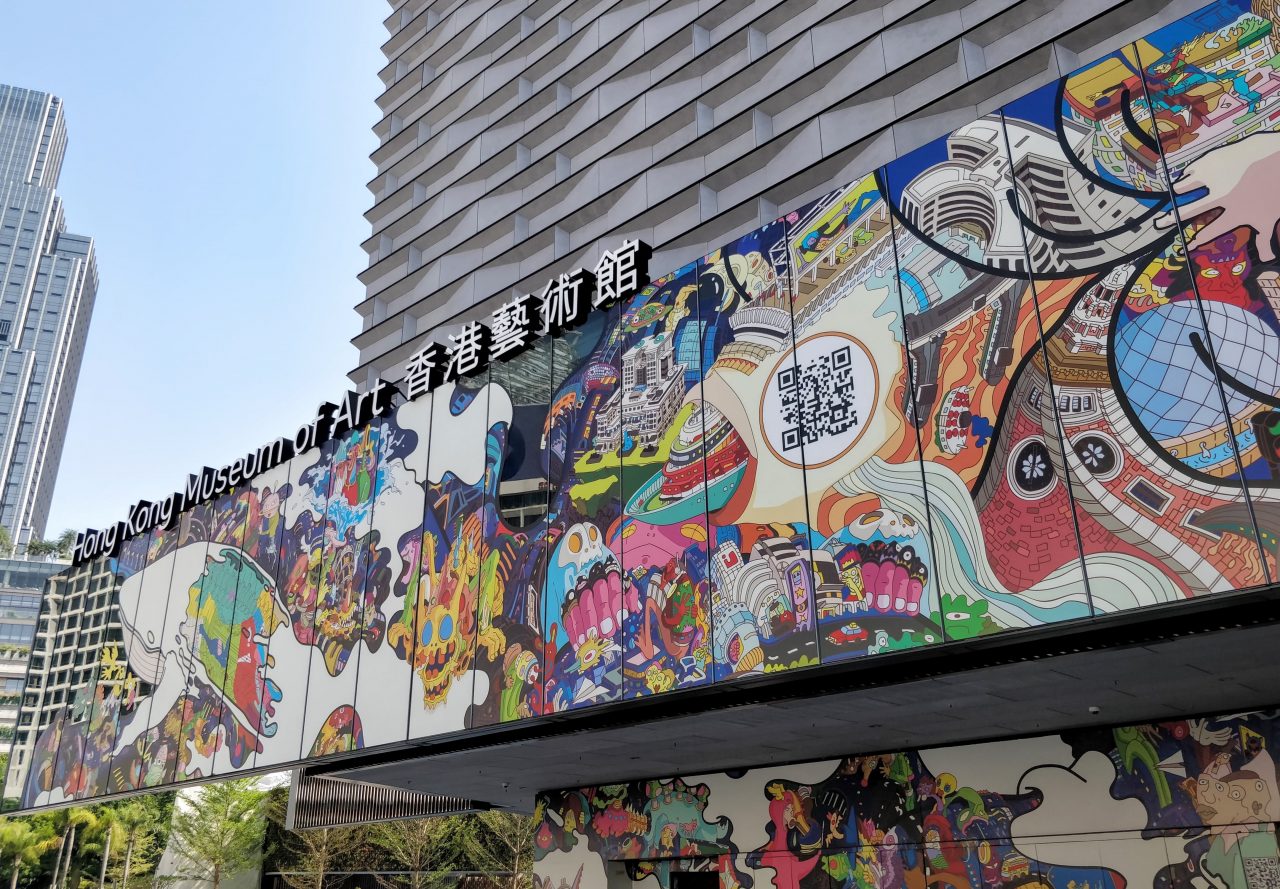
It’s as if an international-class art gallery has been dropped, complete and fully formed, onto the Kowloon harbourside.
A few tweaks and changes have been made since our preview visit. For example, the first-floor exhibition showcasing highlights from the museum’s collections is displayed in darkened rooms. They were a bit too dark before, but now the lights seem to have been turned up a little, making for a more comfortable visit. Also, a couple of smaller works that were previously displayed standing on the floor on the fifth floor – where they could easily have been trodden on – have been moved to safety.
The signage is outstanding, in many cases not only describing the work in question but telling the story behind it. And there are imaginative touches designed to connect with young visitors. For example, a series of paintings by an anonymous artist showing first-hand the destruction of foreign factories in Guangzhou is labelled ”19th Century Instagram”.
No top international art museum is complete without a blockbuster exhibition, and for its initial offering the HKMoA brings us “A Sense of Place from Turner to Hockney.” This features 76 landscapes from the UK’s Tate, including paintings by British artists such as Turner, Constable, Gainsborough and Stubbs and others. Novel exhibits include Constable’s palette and Turner’s paintbox. “Bigger Trees near Warter”, a monumental work measuring 4.6 metres high by 12.2 metres wide, is displayed on a separate floor (Warter is not a misprint – it’s a village in Yorkshire).
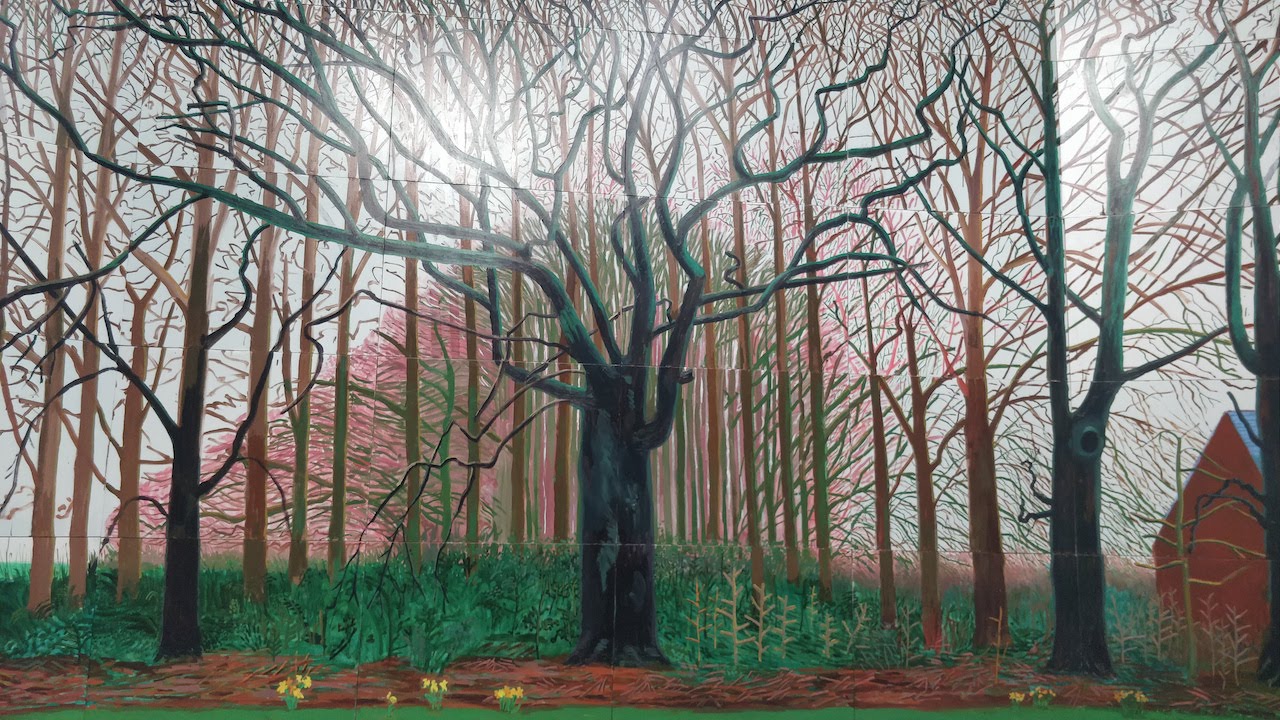
Complementing the show is a selection of works by Hong Kong artists who were asked to respond to the Tate paintings. I have to admit I felt homesick as I watched a video of Simon Wan Chi-chung walking through fields and past rivers and banks of wildflowers in my native UK in idyllic summer weather.
Among the other exhibitions is one that tells the story of the Chater Collection. In 1926 businessman Sir Catchick Paul Chater donated his collection of 400 works to Hong Kong, but 300 disappeared during the Second World War and have never been found. It was said that some were buried in the grounds of Government House, but repeated attempts to find them were unsuccessful.
Other sections feature works by Chinese master Wu Guanzhong, an outstanding collection of Chinese antiquities and much more. In fact, there is so much to see that I started to wilt halfway through the third floor. This is a museum that definitely requires repeat visits.
A famous London museum (not the Tate) once attracted criticism when it adopted the advertising slogan “An ace caff, with quite a nice museum attached”. This was deemed to be dumbing down.

The Hong Kong museum’s catering offerings go far beyond just a café. On the ground floor, on a terrace overlooking Victoria Harbour, there’s a seafood bar called INK. One floor up, again with harbour views, you’ll find the HUE dining room and lounge. Naturally, there’s a museum shop selling books, branded stationery and, of course, postcards.
Verdict: Dazzling addition to Hong Kong’s already extensive cultural facilities.
Top tip: You can book online in advance, but on quiet days you can just turn up and staff will help you register on your phone. Admission is free, though there’s a small charge for special exhibitions such as the Tate show.
Top photo: Frog King, “The taxi didn’t stop when the driver see me in costume”, Chow Chun-fai, 2014, acrylic on canvas.
December 2019
Since the Beginning, Victor Wong, 2019, digital moving images and mixed media.
Two Swallows, Wu Guangzhong, 1981, ink and colour on paper
4 Standouts at the HKMoA
WITH so many outstanding works across so many genres, this is obviously a very subjective list. But these were among the things that caught my eye.
Guangzhou Factories, William Daniell, 1805–1806, oil on canvas. One of many so-called “trade paintings” in the museum’s collections. Initially these studies of trading ports and British activities in China were seen as having little merit. They served only to show people “back home” what parts of the Far East looked like in the days before photography, but are now seen as a valuable historical record. This work, in the first floor exhibition, uses Western painting techniques and shows foreign factories in Canton, now Guangzhou.
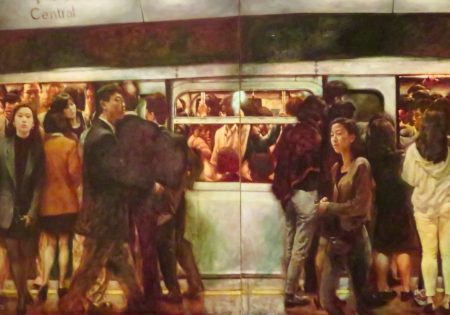 Hong Kong Experience: Entering this exhibition of contemporary art from the city after seeing all those restrained British landscapes in the Tate show is almost mind-blowing. Vast works hang on the walls, many bursting with colour and life. Smaller items include a number of mailboxes from Hong Kong’s Mong Kok district. These were collected by artist Leung Mee-ping, who recorded the voices of the people in the buildings. The recordings are relayed through speakers inside each mailbox; a warning to parents says: “Please note that this exhibit contains indecent language.” Photo: From Tsuen Wan to Central, Wang Hai, 1992, oil on canvas.
Hong Kong Experience: Entering this exhibition of contemporary art from the city after seeing all those restrained British landscapes in the Tate show is almost mind-blowing. Vast works hang on the walls, many bursting with colour and life. Smaller items include a number of mailboxes from Hong Kong’s Mong Kok district. These were collected by artist Leung Mee-ping, who recorded the voices of the people in the buildings. The recordings are relayed through speakers inside each mailbox; a warning to parents says: “Please note that this exhibit contains indecent language.” Photo: From Tsuen Wan to Central, Wang Hai, 1992, oil on canvas.
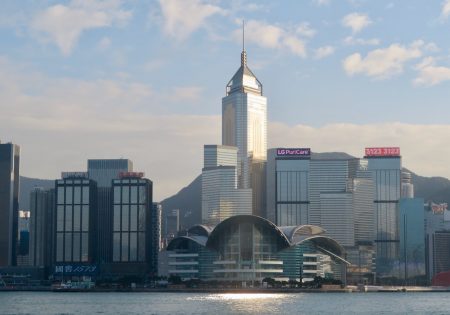 The views: The museum makes the most of its location, as vast windows on each of the exhibition floors offer stunning views across the harbour to Hong Kong Island. On the fifth floor depictions of Hong Kong life are displayed in front of the glass, with the skyline providing an apt backdrop. In addition, the windows flood the building with light. One disappointment is that you can’t go outside – there is a small balcony on the fifth floor, but the doors were locked.
The views: The museum makes the most of its location, as vast windows on each of the exhibition floors offer stunning views across the harbour to Hong Kong Island. On the fifth floor depictions of Hong Kong life are displayed in front of the glass, with the skyline providing an apt backdrop. In addition, the windows flood the building with light. One disappointment is that you can’t go outside – there is a small balcony on the fifth floor, but the doors were locked.
 Industrial Landscape, Laurence Stephen Lowry, 1955: This highlight of the Tate show is painted on a grand scale, showing a whole valley dominated by factories rather than a single street or handful of buildings. The famous matchstick men and matchstick cats and dogs are still there, but never have they been so overwhelmed and rendered insignificant by towering chimneys that belch smoke as they dominate the scene.
Industrial Landscape, Laurence Stephen Lowry, 1955: This highlight of the Tate show is painted on a grand scale, showing a whole valley dominated by factories rather than a single street or handful of buildings. The famous matchstick men and matchstick cats and dogs are still there, but never have they been so overwhelmed and rendered insignificant by towering chimneys that belch smoke as they dominate the scene.
MORE INFO
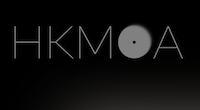 HONG KONG MUSEUM OF ART site, with details of exhibitions, how to plan your visit, and more. READ MORE
HONG KONG MUSEUM OF ART site, with details of exhibitions, how to plan your visit, and more. READ MORE
RELATED
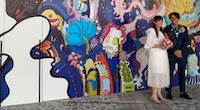 MUSEUM SNEAK PREVIEW: A few weeks before the art museum reopened to the public, Afaranwide had a preview tour. Here’s our original post… READ MORE
MUSEUM SNEAK PREVIEW: A few weeks before the art museum reopened to the public, Afaranwide had a preview tour. Here’s our original post… READ MORE
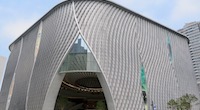 STUNNING NEW OPERA HOUSE: Cantonese opera is reckoned to date back to the 13th century, but in December 2018 it arrived in the 21st century with a bang. That’s when the HK$2.7 billion ($255 million) Xiqu Centre, an ultra-modern venue… READ MORE
STUNNING NEW OPERA HOUSE: Cantonese opera is reckoned to date back to the 13th century, but in December 2018 it arrived in the 21st century with a bang. That’s when the HK$2.7 billion ($255 million) Xiqu Centre, an ultra-modern venue… READ MORE
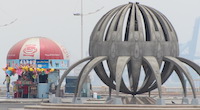 JEDDAH’S GIANT SCULPTURES: Jeddah, a port city on Saudi Arabia’s Red Sea coast, is the unlikely setting for hundreds of monumental sculptures by famous Western artists such as Joan Miró and Henry Moore… READ MORE
JEDDAH’S GIANT SCULPTURES: Jeddah, a port city on Saudi Arabia’s Red Sea coast, is the unlikely setting for hundreds of monumental sculptures by famous Western artists such as Joan Miró and Henry Moore… READ MORE
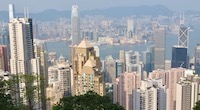 HOW HONG KONG IS TACKLING CORONAVIRUS: The city of skyscrapers is known as a bustling, noisy global metropolis. But how is it coping with COVID-19? READ MORE
HOW HONG KONG IS TACKLING CORONAVIRUS: The city of skyscrapers is known as a bustling, noisy global metropolis. But how is it coping with COVID-19? READ MORE
RECOMMENDED
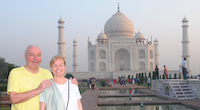 WELCOME TO OUR WORLD! Afaranwide’s home page – this is where you can find out about our latest posts and other highlights. READ MORE
WELCOME TO OUR WORLD! Afaranwide’s home page – this is where you can find out about our latest posts and other highlights. READ MORE
 TOP 10 VIRTUAL ATTRACTIONS: Many of the world’s most popular tourists sites are closed because of the coronavirus crisis, but you can still visit them virtually while you’re self-isolating. READ MORE
TOP 10 VIRTUAL ATTRACTIONS: Many of the world’s most popular tourists sites are closed because of the coronavirus crisis, but you can still visit them virtually while you’re self-isolating. READ MORE
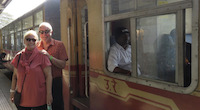 SHIMLA, QUEEN OF THE HILLS: Government officials once retreated to Shimla in the foothills of the Himalayas to escape India’s blazing hot summers. Now tourists make the same journey. READ MORE
SHIMLA, QUEEN OF THE HILLS: Government officials once retreated to Shimla in the foothills of the Himalayas to escape India’s blazing hot summers. Now tourists make the same journey. READ MORE
 TEN THINGS WE LEARNED: Our up-to-the-minute guide to creating a website, one step at a time. The costs, the mistakes – it’s what we wish we’d known when we started blogging. READ MORE
TEN THINGS WE LEARNED: Our up-to-the-minute guide to creating a website, one step at a time. The costs, the mistakes – it’s what we wish we’d known when we started blogging. READ MORE
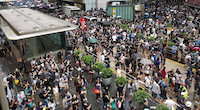 TROUBLED TIMES FOR EXPATS: Moving abroad can seem an idyllic prospect, but what happens when sudden upheavals or the inescapable realities of life intrude? READ MORE
TROUBLED TIMES FOR EXPATS: Moving abroad can seem an idyllic prospect, but what happens when sudden upheavals or the inescapable realities of life intrude? READ MORE
LET'S KEEP IN TOUCH!
Art Museum is
a Masterpiece

COLIN SIMPSON
Hong Kong Museum of Art
THE much-loved Hong Kong Museum of Art has finally reopened after a massive four-year refurbishment – and it’s a triumph.
A few weeks ago we had a sneak-peek preview of the building, taking part in a series of visits by the public designed to test systems and procedures (see original post below).
Then, only two floors were open. But when I went back after the opening on Nov. 30 the revitalized museum was revealed in all its glory. There are five floors packed with an amazing selection of work, ranging from exquisite Chinese porcelain, calligraphy, and paintings showing Hong Kong’s early days to vibrant, large-scale creations by the city’s contemporary artists.

It’s as if an international-class art gallery has been dropped, complete and fully formed, onto the Kowloon harbourside.
A few tweaks and changes have been made since our preview visit. For example, the first-floor exhibition showcasing highlights from the museum’s collections is displayed in darkened rooms. They were a bit too dark before, but now the lights seem to have been turned up a little, making for a more comfortable visit. Also, a couple of smaller works that were previously displayed standing on the floor on the fifth floor – where they could easily have been trodden on – have been moved to safety.
The signage is outstanding, in many cases not only describing the work in question but telling the story behind it. And there are imaginative touches designed to connect with young visitors. For example, a series of paintings by an anonymous artist showing first-hand the destruction of foreign factories in Guangzhou is labelled ”19th Century Instagram”.
No top international art museum is complete without a blockbuster exhibition, and for its initial offering the HKMoA brings us “A Sense of Place from Turner to Hockney.” This features 76 landscapes from the UK’s Tate, including paintings by British artists such as Turner, Constable, Gainsborough and Stubbs and others. Novel exhibits include Constable’s palette and Turner’s paintbox. “Bigger Trees near Warter”, a monumental work measuring 4.6 metres high by 12.2 metres wide, is displayed on a separate floor (Warter is not a misprint – it’s a village in Yorkshire).
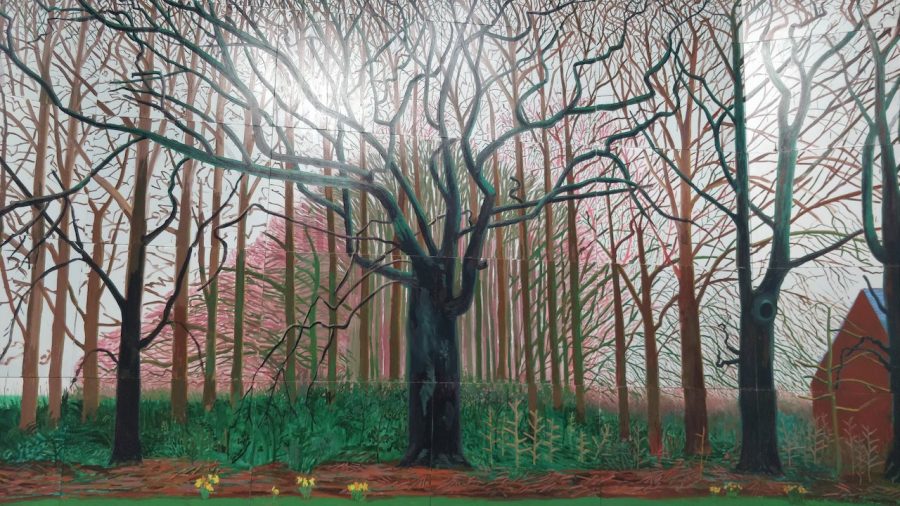
Complementing the show is a selection of works by Hong Kong artists who were asked to respond to the Tate paintings. I have to admit I felt homesick as I watched a video of Simon Wan Chi-chung walking through fields and past rivers and banks of wildflowers in my native UK in idyllic summer weather.
Among the other exhibitions is one that tells the story of the Chater Collection. In 1926 businessman Sir Catchick Paul Chater donated his collection of 400 works to Hong Kong, but 300 disappeared during the Second World War and have never been found. It was said that some were buried in the grounds of Government House, but repeated attempts to find them were unsuccessful.
Other sections feature works by Chinese master Wu Guanzhong, an outstanding collection of Chinese antiquities and much more. In fact, there is so much to see that I started to wilt halfway through the third floor. This is a museum that definitely requires repeat visits.
A famous London museum (not the Tate) once attracted criticism when it adopted the advertising slogan “An ace caff, with quite a nice museum attached”. This was deemed to be dumbing down.
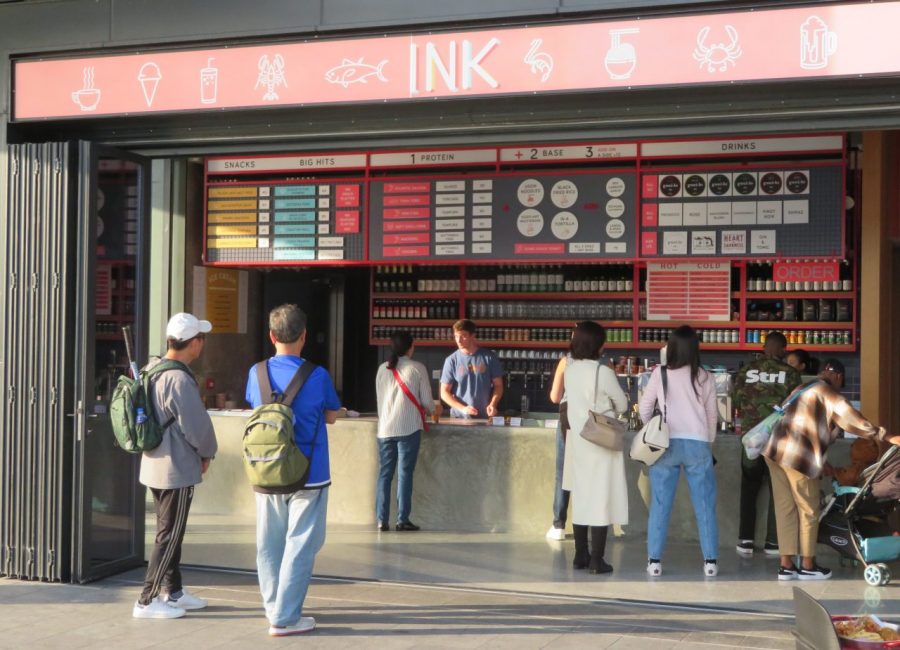
The Hong Kong museum’s catering offerings go far beyond just a café. On the ground floor, on a terrace overlooking Victoria Harbour, there’s a seafood bar called INK. One floor up, again with harbour views, you’ll find the HUE dining room and lounge. Naturally, there’s a museum shop selling books, branded stationery and, of course, postcards.
Verdict: Dazzling addition to Hong Kong’s already extensive cultural facilities.
Top tip: You can book online in advance, but on quiet days you can just turn up and staff will help you register on your phone. Admission is free, though there’s a small charge for special exhibitions such as the Tate show.
Top photo: Frog King, “The taxi didn’t stop when the driver see me in costume”, Chow Chun-fai, 2014, acrylic on canvas.
December 2019
Since the Beginning, Victor Wong, 2019, digital moving images and mixed media.
Two Swallows, Wu Guangzhong, 1981, ink and colour on paper
4 Standouts at the HKMoA
WITH so many outstanding works across so many genres, this is obviously a very subjective list. But these were among the things that caught my eye.
Guangzhou Factories, William Daniell, 1805–1806, oil on canvas. One of many so-called “trade paintings” in the museum’s collections. Initially these studies of trading ports and British activities in China were seen as having little merit. They served only to show people “back home” what parts of the Far East looked like in the days before photography, but are now seen as a valuable historical record. This work, in the first floor exhibition, uses Western painting techniques and shows foreign factories in Canton, now Guangzhou.
 Hong Kong Experience: Entering this exhibition of contemporary art from the city after seeing all those restrained British landscapes in the Tate show is almost mind-blowing. Vast works hang on the walls, many bursting with colour and life. Smaller items include a number of mailboxes from Hong Kong’s Mong Kok district. These were collected by artist Leung Mee-ping, who recorded the voices of the people in the buildings. The recordings are relayed through speakers inside each mailbox; a warning to parents says: “Please note that this exhibit contains indecent language.” Photo: From Tsuen Wan to Central, Wang Hai, 1992, oil on canvas.
Hong Kong Experience: Entering this exhibition of contemporary art from the city after seeing all those restrained British landscapes in the Tate show is almost mind-blowing. Vast works hang on the walls, many bursting with colour and life. Smaller items include a number of mailboxes from Hong Kong’s Mong Kok district. These were collected by artist Leung Mee-ping, who recorded the voices of the people in the buildings. The recordings are relayed through speakers inside each mailbox; a warning to parents says: “Please note that this exhibit contains indecent language.” Photo: From Tsuen Wan to Central, Wang Hai, 1992, oil on canvas.
 The views: The museum makes the most of its location, as vast windows on each of the exhibition floors offer stunning views across the harbour to Hong Kong Island. On the fifth floor depictions of Hong Kong life are displayed in front of the glass, with the skyline providing an apt backdrop. In addition, the windows flood the building with light. One disappointment is that you can’t go outside – there is a small balcony on the fifth floor, but the doors were locked.
The views: The museum makes the most of its location, as vast windows on each of the exhibition floors offer stunning views across the harbour to Hong Kong Island. On the fifth floor depictions of Hong Kong life are displayed in front of the glass, with the skyline providing an apt backdrop. In addition, the windows flood the building with light. One disappointment is that you can’t go outside – there is a small balcony on the fifth floor, but the doors were locked.
 Industrial Landscape, Laurence Stephen Lowry, 1955: This highlight of the Tate show is painted on a grand scale, showing a whole valley dominated by factories rather than a single street or handful of buildings. The famous matchstick men and matchstick cats and dogs are still there, but never have they been so overwhelmed and rendered insignificant by towering chimneys that belch smoke as they dominate the scene.
Industrial Landscape, Laurence Stephen Lowry, 1955: This highlight of the Tate show is painted on a grand scale, showing a whole valley dominated by factories rather than a single street or handful of buildings. The famous matchstick men and matchstick cats and dogs are still there, but never have they been so overwhelmed and rendered insignificant by towering chimneys that belch smoke as they dominate the scene.
MORE INFO
 HONG KONG MUSEUM OF ART site, with details of exhibitions, how to plan your visit, and more. READ MORE
HONG KONG MUSEUM OF ART site, with details of exhibitions, how to plan your visit, and more. READ MORE
RELATED
 MUSEUM SNEAK PREVIEW: A few weeks before the art museum reopened to the public, Afaranwide had a preview tour. Here’s our original post… READ MORE
MUSEUM SNEAK PREVIEW: A few weeks before the art museum reopened to the public, Afaranwide had a preview tour. Here’s our original post… READ MORE
 STUNNING NEW OPERA HOUSE: Cantonese opera is reckoned to date back to the 13th century, but in December 2018 it arrived in the 21st century with a bang. That’s when the HK$2.7 billion ($255 million) Xiqu Centre, an ultra-modern venue… READ MORE
STUNNING NEW OPERA HOUSE: Cantonese opera is reckoned to date back to the 13th century, but in December 2018 it arrived in the 21st century with a bang. That’s when the HK$2.7 billion ($255 million) Xiqu Centre, an ultra-modern venue… READ MORE
 JEDDAH’S GIANT SCULPTURES: Jeddah, a port city on Saudi Arabia’s Red Sea coast, is the unlikely setting for hundreds of monumental sculptures by famous Western artists such as Joan Miró and Henry Moore… READ MORE
JEDDAH’S GIANT SCULPTURES: Jeddah, a port city on Saudi Arabia’s Red Sea coast, is the unlikely setting for hundreds of monumental sculptures by famous Western artists such as Joan Miró and Henry Moore… READ MORE
 HOW HONG KONG IS TACKLING CORONAVIRUS: The city of skyscrapers is known as a bustling, noisy global metropolis. But how is it coping with COVID-19? READ MORE
HOW HONG KONG IS TACKLING CORONAVIRUS: The city of skyscrapers is known as a bustling, noisy global metropolis. But how is it coping with COVID-19? READ MORE
RECOMMENDED
 WELCOME TO OUR WORLD! Afaranwide’s home page – this is where you can find out about our latest posts and other highlights. READ MORE
WELCOME TO OUR WORLD! Afaranwide’s home page – this is where you can find out about our latest posts and other highlights. READ MORE
 TOP 10 VIRTUAL ATTRACTIONS: Many of the world’s most popular tourists sites are closed because of the coronavirus crisis, but you can still visit them virtually while you’re self-isolating. READ MORE
TOP 10 VIRTUAL ATTRACTIONS: Many of the world’s most popular tourists sites are closed because of the coronavirus crisis, but you can still visit them virtually while you’re self-isolating. READ MORE
 SHIMLA, QUEEN OF THE HILLS: Government officials once retreated to Shimla in the foothills of the Himalayas to escape India’s blazing hot summers. Now tourists make the same journey. READ MORE
SHIMLA, QUEEN OF THE HILLS: Government officials once retreated to Shimla in the foothills of the Himalayas to escape India’s blazing hot summers. Now tourists make the same journey. READ MORE
 TEN THINGS WE LEARNED: Our up-to-the-minute guide to creating a website, one step at a time. The costs, the mistakes – it’s what we wish we’d known when we started blogging. READ MORE
TEN THINGS WE LEARNED: Our up-to-the-minute guide to creating a website, one step at a time. The costs, the mistakes – it’s what we wish we’d known when we started blogging. READ MORE
 TROUBLED TIMES FOR EXPATS: Moving abroad can seem an idyllic prospect, but what happens when sudden upheavals or the inescapable realities of life intrude? READ MORE
TROUBLED TIMES FOR EXPATS: Moving abroad can seem an idyllic prospect, but what happens when sudden upheavals or the inescapable realities of life intrude? READ MORE
LET'S KEEP IN TOUCH!
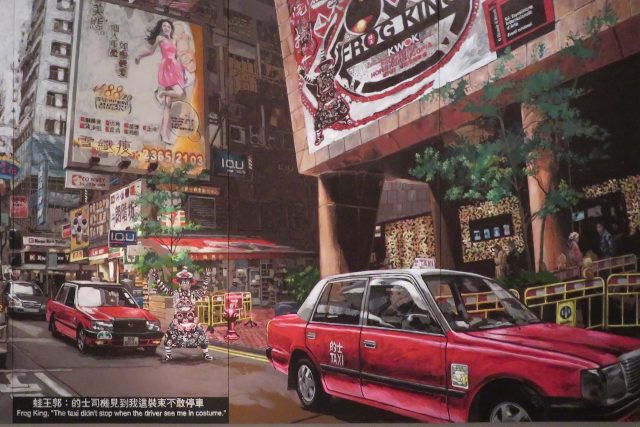
Art Museum is
a Masterpiece

COLIN SIMPSON
Hong Kong Museum of Art
THE much-loved Hong Kong Museum of Art has finally reopened after a massive four-year refurbishment – and it’s a triumph.
A few weeks ago we had a sneak-peek preview of the building, taking part in a series of visits by the public designed to test systems and procedures (see original post below).
Then, only two floors were open. But when I went back after the opening on Nov. 30 the revitalized museum was revealed in all its glory. There are five floors packed with an amazing selection of work, ranging from exquisite Chinese porcelain, calligraphy, and paintings showing Hong Kong’s early days to vibrant, large-scale creations by the city’s contemporary artists.

It’s as if an international-class art gallery has been dropped, complete and fully formed, onto the Kowloon harbourside.
A few tweaks and changes have been made since our preview visit. For example, the first-floor exhibition showcasing highlights from the museum’s collections is displayed in darkened rooms. They were a bit too dark before, but now the lights seem to have been turned up a little, making for a more comfortable visit. Also, a couple of smaller works that were previously displayed standing on the floor on the fifth floor – where they could easily have been trodden on – have been moved to safety.
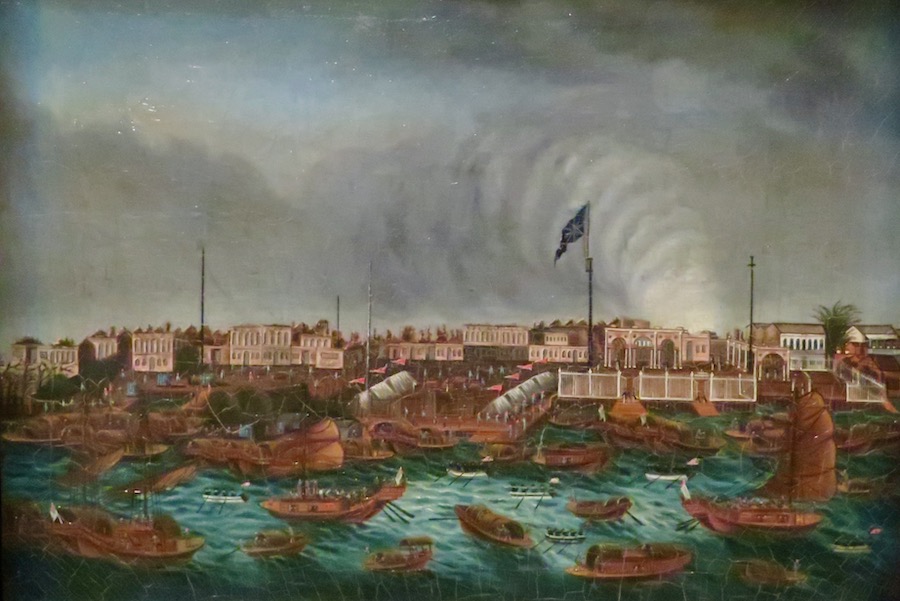

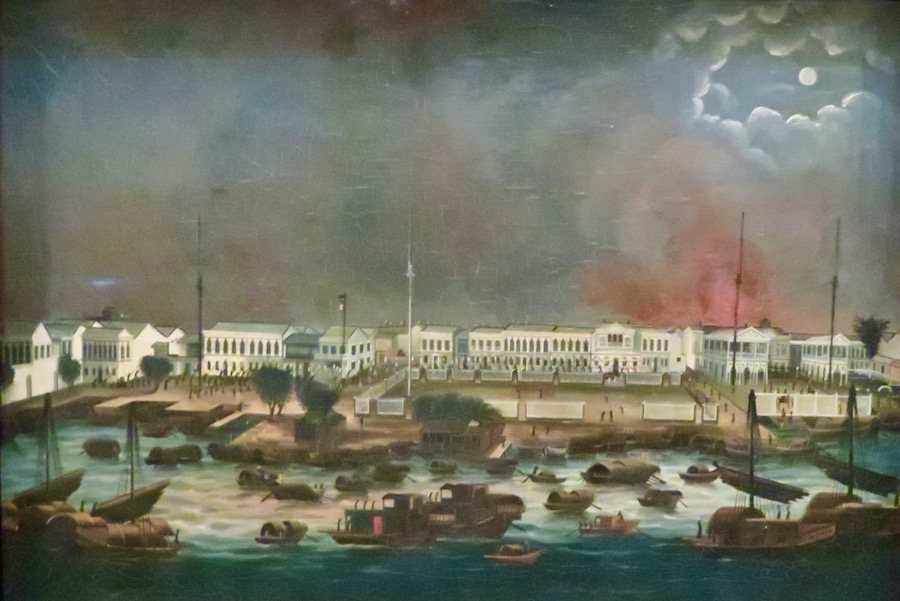
The signage is outstanding, in many cases not only describing the work in question but telling the story behind it. And there are imaginative touches designed to connect with young visitors. For example, a series of paintings by an anonymous artist showing first-hand the destruction of foreign factories in Guangzhou is labelled ”19th Century Instagram”.
No top international art museum is complete without a blockbuster exhibition, and for its initial offering the HKMoA brings us “A Sense of Place from Turner to Hockney.” This features 76 landscapes from the UK’s Tate, including paintings by British artists such as Turner, Constable, Gainsborough and Stubbs and others.
Novel exhibits include Constable’s palette and Turner’s paintbox. “Bigger Trees near Warter”, a monumental work measuring 4.6 metres high by 12.2 metres wide, is displayed on a separate floor (Warter is not a misprint – it’s a village in Yorkshire).

Complementing the show is a selection of works by Hong Kong artists who were asked to respond to the Tate paintings. I have to admit I felt homesick as I watched a video of Simon Wan Chi-chung walking through fields and past rivers and banks of wildflowers in my native UK in idyllic summer weather.
Among the other exhibitions is one that tells the story of the Chater Collection. In 1926 businessman Sir Catchick Paul Chater donated his collection of 400 works to Hong Kong, but 300 disappeared during the Second World War and have never been found. It was said that some were buried in the grounds of Government House, but repeated attempts to find them were unsuccessful.
Other sections feature works by Chinese master Wu Guanzhong, an outstanding collection of Chinese antiquities and much more. In fact, there is so much to see that I started to wilt halfway through the third floor. This is a museum that definitely requires repeat visits.
A famous London museum (not the Tate) once attracted criticism when it adopted the advertising slogan “An ace caff, with quite a nice museum attached”. This was deemed to be dumbing down.

The Hong Kong museum’s catering offerings go far beyond just a café. On the ground floor, on a terrace overlooking Victoria Harbour, there’s a seafood bar called INK. One floor up, again with harbour views, you’ll find the HUE dining room and lounge. Naturally, there’s a museum shop selling books, branded stationery and, of course, postcards.
Verdict: Dazzling addition to Hong Kong’s already extensive cultural facilities.
Top tip: You can book online in advance, but on quiet days you can just turn up and staff will help you register on your phone. Admission is free, though there’s a small charge for special exhibitions such as the Tate show.
Top photo: Frog King, “The taxi didn’t stop when the driver see me in costume”, Chow Chun-fai, 2014, acrylic on canvas.
Since the Beginning, Victor Wong, 2019, digital moving images and mixed media.

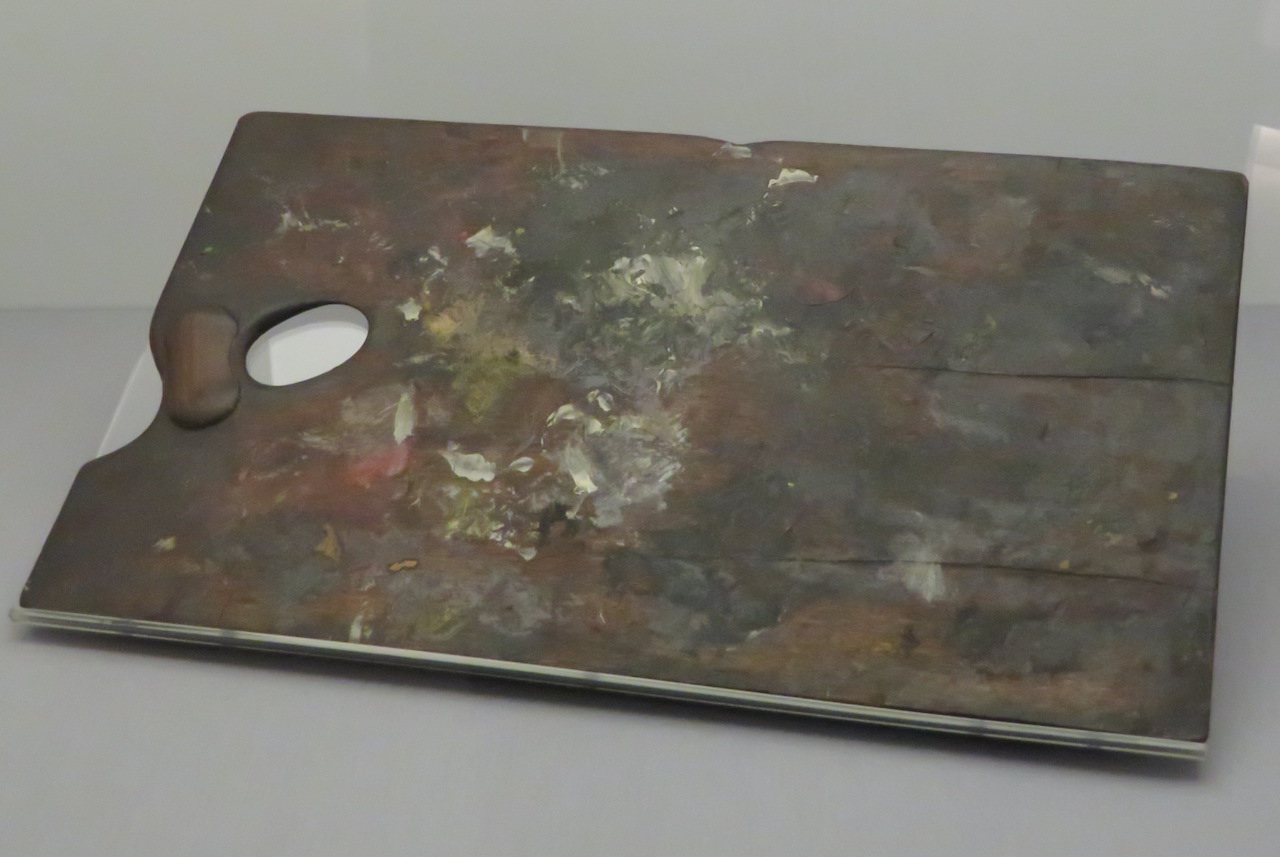
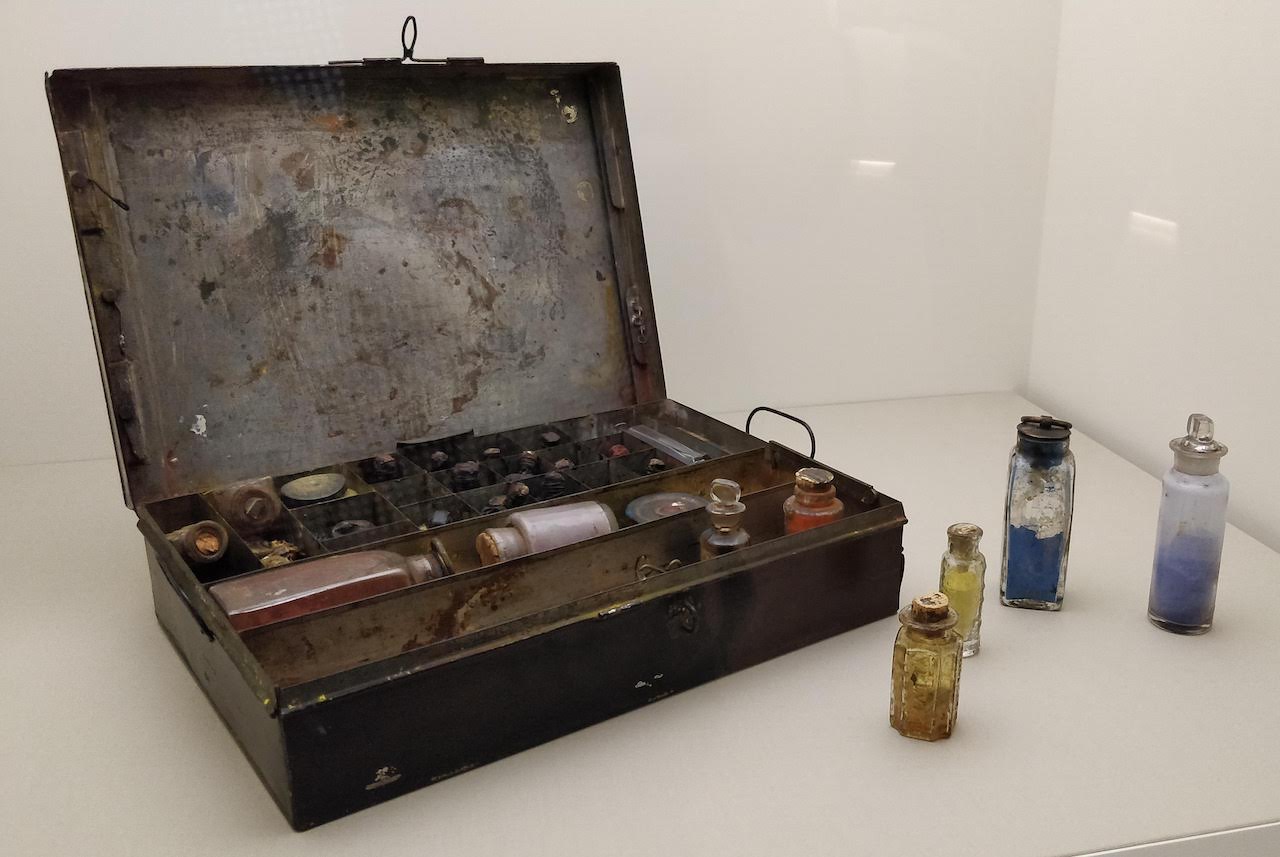
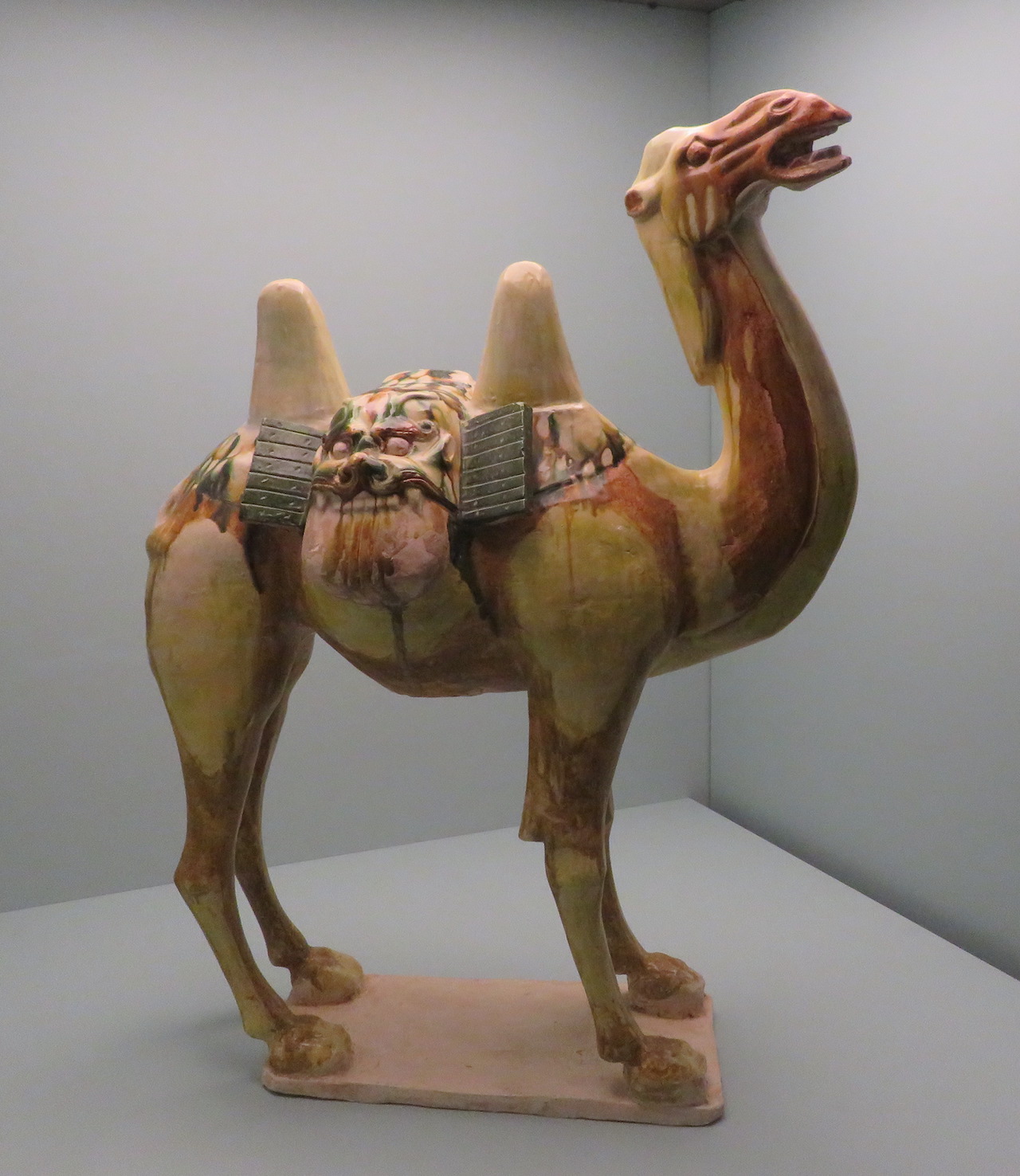

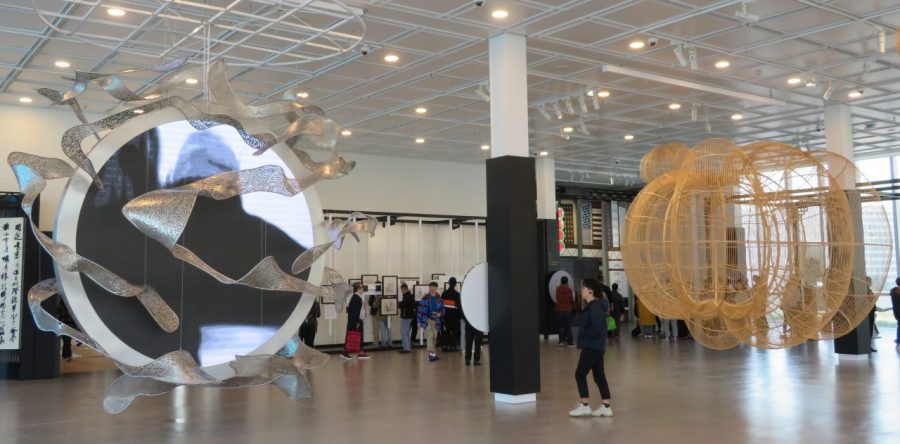
Two Swallows, Wu Guangzhong, 1981, ink and colour on paper
December 2019
4 Standouts at the HKMoA
WITH so many outstanding works across so many genres, this is obviously a very subjective list. But these were among the things that caught my eye.
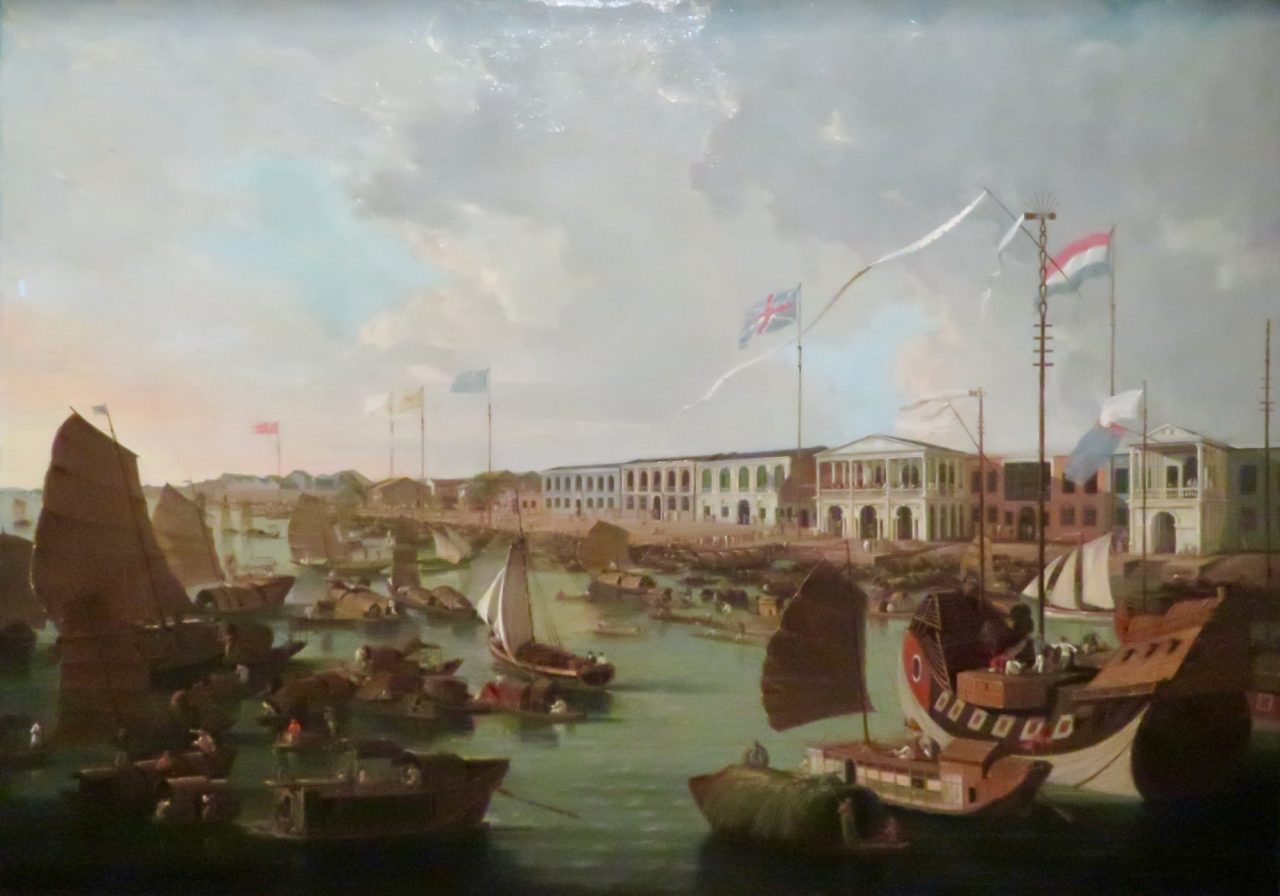
Guangzhou Factories, William Daniell, 1805–1806, oil on canvas. One of many so-called “trade paintings” in the museum’s collections. Initially these studies of trading ports and British activities in China were seen as having little merit. They served only to show people “back home” what parts of the Far East looked like in the days before photography, but are now seen as a valuable historical record. This work, in the first floor exhibition, uses Western painting techniques and shows foreign factories in Canton, now Guangzhou.
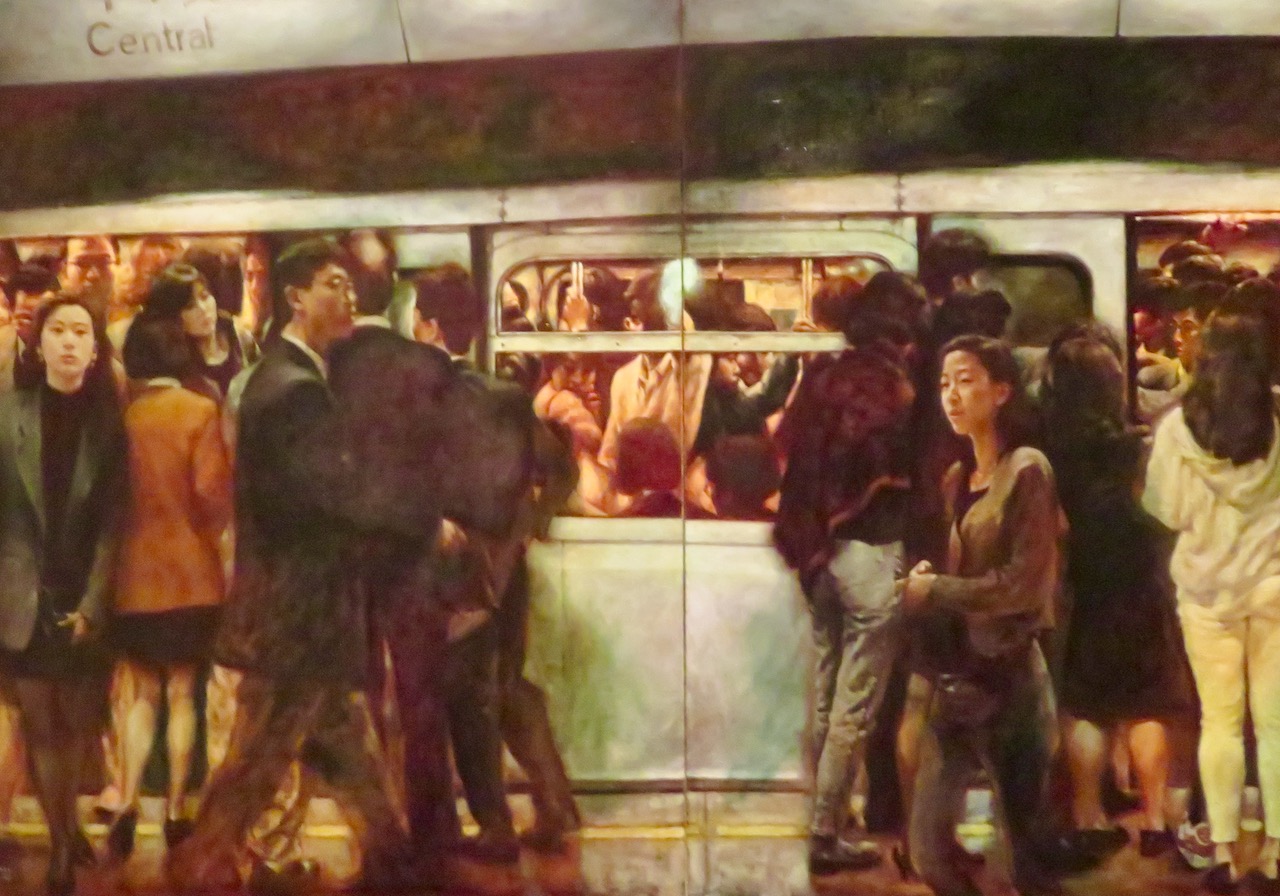 Hong Kong Experience: Entering this exhibition of contemporary art from the city after seeing all those restrained British landscapes in the Tate show is almost mind-blowing. Vast works hang on the walls, many bursting with colour and life. Smaller items include a number of mailboxes from Hong Kong’s Mong Kok district. These were collected by artist Leung Mee-ping, who recorded the voices of the people in the buildings. The recordings are relayed through speakers inside each mailbox; a warning to parents says: “Please note that this exhibit contains indecent language.” Photo: From Tsuen Wan to Central, Wang Hai, 1992, oil on canvas.
Hong Kong Experience: Entering this exhibition of contemporary art from the city after seeing all those restrained British landscapes in the Tate show is almost mind-blowing. Vast works hang on the walls, many bursting with colour and life. Smaller items include a number of mailboxes from Hong Kong’s Mong Kok district. These were collected by artist Leung Mee-ping, who recorded the voices of the people in the buildings. The recordings are relayed through speakers inside each mailbox; a warning to parents says: “Please note that this exhibit contains indecent language.” Photo: From Tsuen Wan to Central, Wang Hai, 1992, oil on canvas.
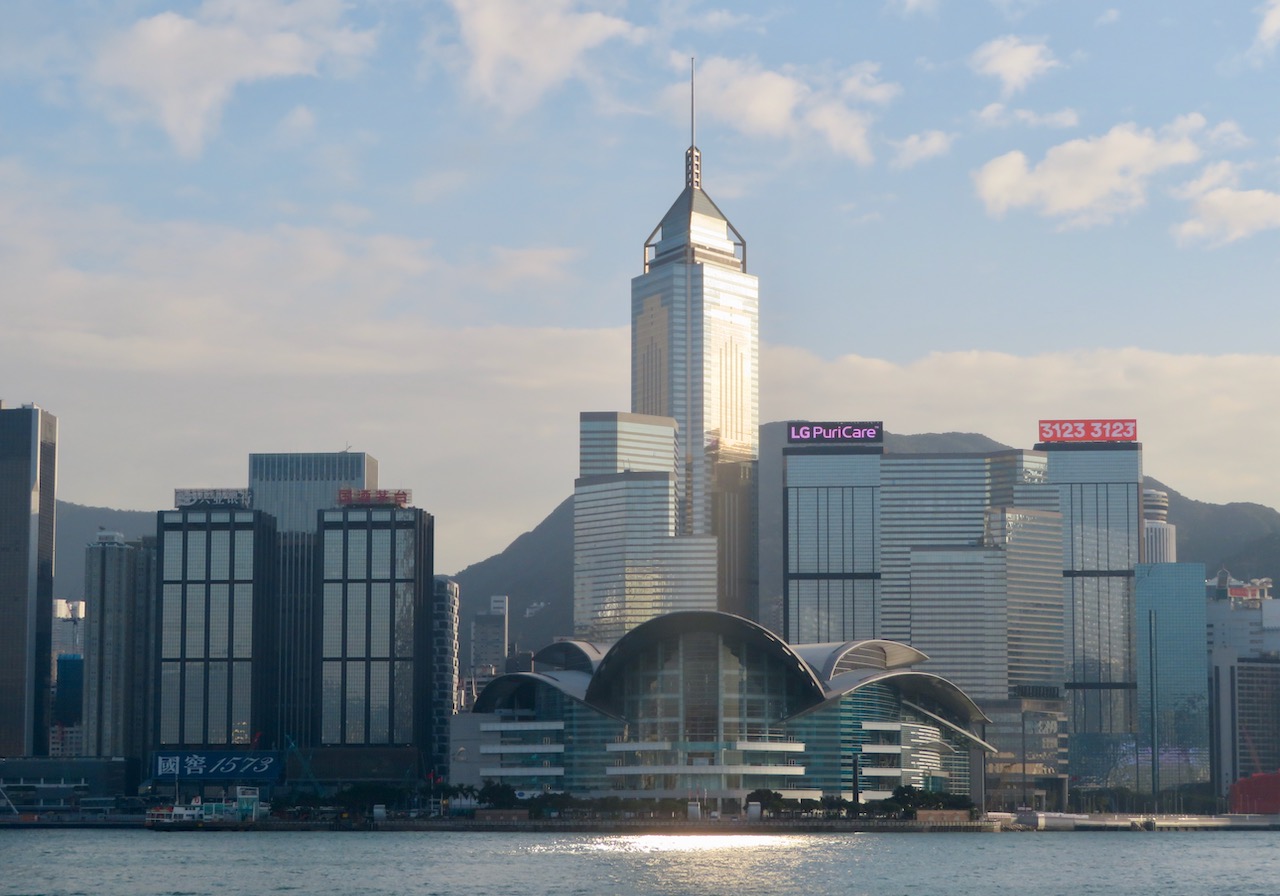 The views: The museum makes the most of its location, as vast windows on each of the exhibition floors offer stunning views across the harbour to Hong Kong Island. On the fifth floor depictions of Hong Kong life are displayed in front of the glass, with the skyline providing an apt backdrop. In addition, the windows flood the building with light. One disappointment is that you can’t go outside – there is a small balcony on the fifth floor, but the doors were locked.
The views: The museum makes the most of its location, as vast windows on each of the exhibition floors offer stunning views across the harbour to Hong Kong Island. On the fifth floor depictions of Hong Kong life are displayed in front of the glass, with the skyline providing an apt backdrop. In addition, the windows flood the building with light. One disappointment is that you can’t go outside – there is a small balcony on the fifth floor, but the doors were locked. Industrial Landscape, Laurence Stephen Lowry, 1955: This highlight of the Tate show is painted on a grand scale, showing a whole valley dominated by factories rather than a single street or handful of buildings. The famous matchstick men and matchstick cats and dogs are still there, but never have they been so overwhelmed and rendered insignificant by towering chimneys that belch smoke as they dominate the scene.
Industrial Landscape, Laurence Stephen Lowry, 1955: This highlight of the Tate show is painted on a grand scale, showing a whole valley dominated by factories rather than a single street or handful of buildings. The famous matchstick men and matchstick cats and dogs are still there, but never have they been so overwhelmed and rendered insignificant by towering chimneys that belch smoke as they dominate the scene.
MORE INFO
 HONG KONG MUSEUM OF ART site, with details of exhibitions, how to plan your visit, and more. READ MORE
HONG KONG MUSEUM OF ART site, with details of exhibitions, how to plan your visit, and more. READ MORE
RELATED
 MUSEUM SNEAK PREVIEW: A few weeks before the art museum reopened to the public, Afaranwide had a preview tour. Here’s our original post… READ MORE
MUSEUM SNEAK PREVIEW: A few weeks before the art museum reopened to the public, Afaranwide had a preview tour. Here’s our original post… READ MORE
 STUNNING NEW OPERA HOUSE: Cantonese opera is reckoned to date back to the 13th century, but in December 2018 it arrived in the 21st century with a bang. That’s when the HK$2.7 billion ($255 million) Xiqu Centre, an ultra-modern venue… READ MORE
STUNNING NEW OPERA HOUSE: Cantonese opera is reckoned to date back to the 13th century, but in December 2018 it arrived in the 21st century with a bang. That’s when the HK$2.7 billion ($255 million) Xiqu Centre, an ultra-modern venue… READ MORE
 JEDDAH’S GIANT SCULPTURES: Jeddah, a port city on Saudi Arabia’s Red Sea coast, is the unlikely setting for hundreds of monumental sculptures by famous Western artists such as Joan Miró and Henry Moore… READ MORE
JEDDAH’S GIANT SCULPTURES: Jeddah, a port city on Saudi Arabia’s Red Sea coast, is the unlikely setting for hundreds of monumental sculptures by famous Western artists such as Joan Miró and Henry Moore… READ MORE
 HOW HONG KONG IS TACKLING CORONAVIRUS: The city of skyscrapers is known as a bustling, noisy global metropolis. But how is it coping with COVID-19? READ MORE
HOW HONG KONG IS TACKLING CORONAVIRUS: The city of skyscrapers is known as a bustling, noisy global metropolis. But how is it coping with COVID-19? READ MORE
RECOMMENDED
 WELCOME TO OUR WORLD! Afaranwide’s home page – this is where you can find out about our latest posts and other highlights. READ MORE
WELCOME TO OUR WORLD! Afaranwide’s home page – this is where you can find out about our latest posts and other highlights. READ MORE
 TOP 10 VIRTUAL ATTRACTIONS: Many of the world’s most popular tourists sites are closed because of the coronavirus crisis, but you can still visit them virtually while you’re self-isolating. READ MORE
TOP 10 VIRTUAL ATTRACTIONS: Many of the world’s most popular tourists sites are closed because of the coronavirus crisis, but you can still visit them virtually while you’re self-isolating. READ MORE
 TEN THINGS WE LEARNED: Our up-to-the-minute guide to creating a website, one step at a time. The costs, the mistakes – it’s what we wish we’d known when we started blogging. READ MORE
TEN THINGS WE LEARNED: Our up-to-the-minute guide to creating a website, one step at a time. The costs, the mistakes – it’s what we wish we’d known when we started blogging. READ MORE
 TROUBLED TIMES FOR EXPATS: Moving abroad can seem an idyllic prospect, but what happens when sudden upheavals or the inescapable realities of life intrude? READ MORE
TROUBLED TIMES FOR EXPATS: Moving abroad can seem an idyllic prospect, but what happens when sudden upheavals or the inescapable realities of life intrude? READ MORE
 SHIMLA, QUEEN OF THE HILLS: Government officials once retreated to Shimla in the foothills of the Himalayas to escape India’s blazing hot summers. Now tourists make the same journey. READ MORE
SHIMLA, QUEEN OF THE HILLS: Government officials once retreated to Shimla in the foothills of the Himalayas to escape India’s blazing hot summers. Now tourists make the same journey. READ MORE


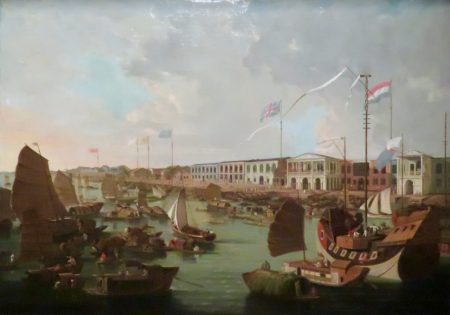
This looks so cool! I’m hoping to go to Hong Kong sometime next year 😁
It’s a must-see, Jen. And when you visit, do make sure you see both Hong Kong Island and Kowloon, joined by the wonderful short trip on the Star Ferry. And if you have time, go for a hik, the countryside here is quite stunning. Have a lovely visit. Sue